全文HTML
--> --> -->本文设计的频率编码器采用了空域-频域结合的方式, 利用了单元频率不同的相位响应灵敏度, 通过低和高相位灵敏度对数字“0”和“1”的单元进行编码设计. 编码在不改变空间编码模式的情况下, 可实现对电磁波能量辐射的各种灵活控制, 而且对电磁波能量辐射具有很好的分散作用, 能有效减少雷达散射截面, 雷达散射截面缩减值在θ = 0, φ = 0方向上最大可达到29 dB, 在太赫兹波隐身中具有巨大应用价值.

在忽略表达式的高阶时, 工作频带内基本单元间的相位差是恒定的, 代表所设计编码器基本单元的相位信息. 此时 (1) 式可简化为

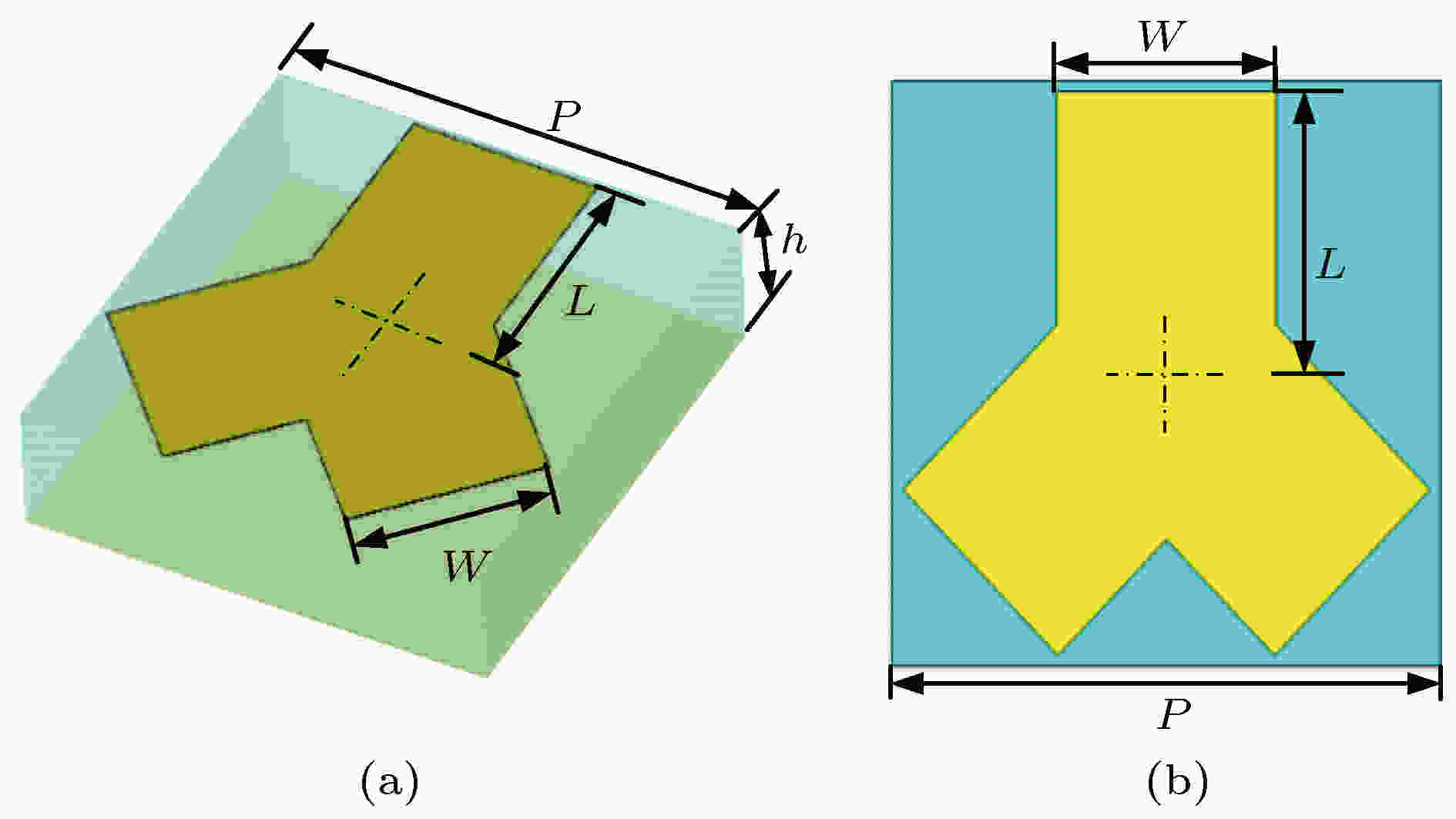 图 1 人字形超表面单元结构 (a)单元结构三维立体图; (b)单元结构二维平面图
图 1 人字形超表面单元结构 (a)单元结构三维立体图; (b)单元结构二维平面图Figure1. Herringbone metasurfaceunit structure: (a) Three-dimensional of unit structure; (b) two-simensional of unit structure.
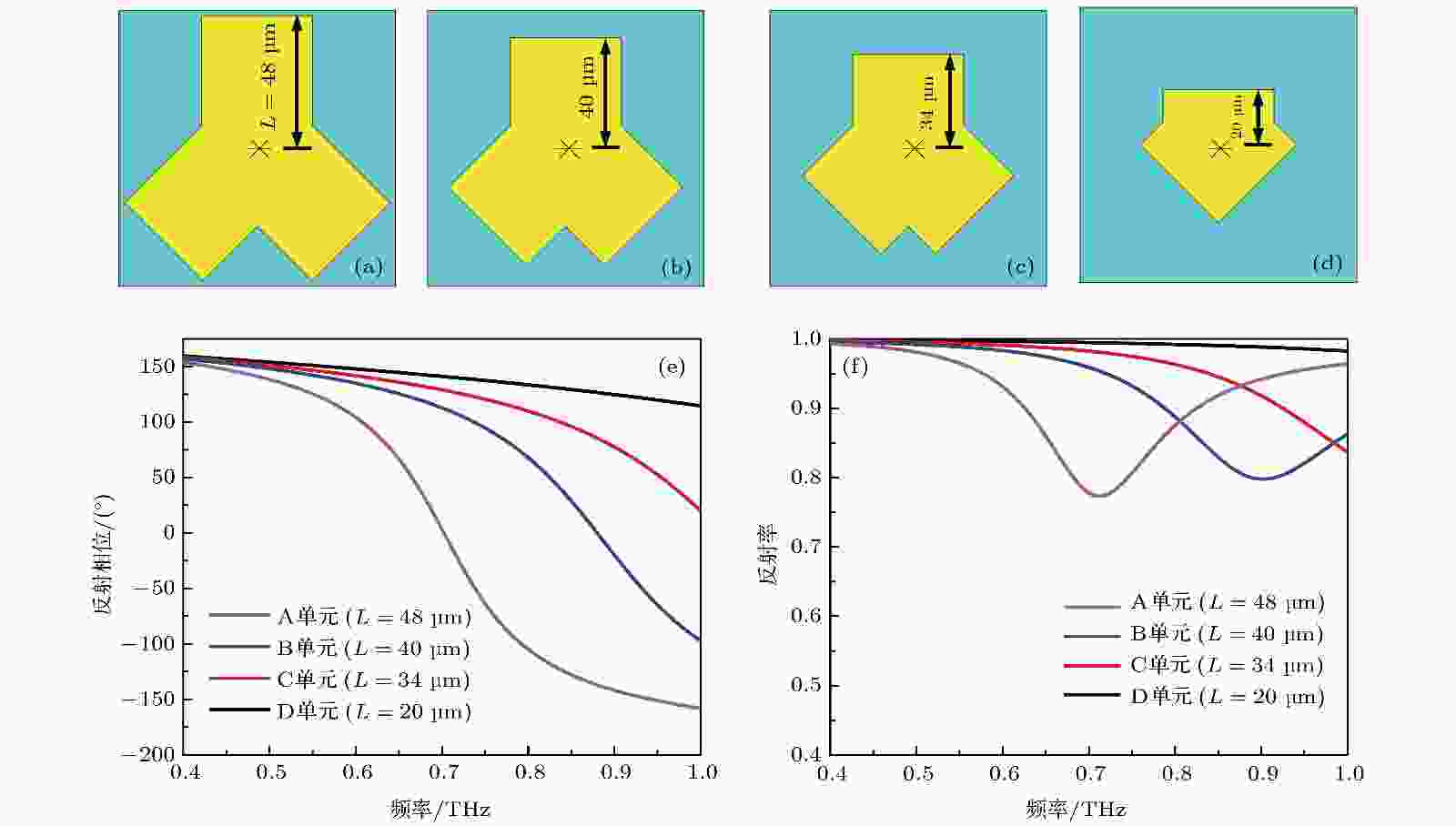 图 2 4种人字形超表面基本单元结构及其特性曲线 (a) A单元(L = 48 μm); (b) B单元(L = 40 μm); (c) C单元(L = 34 μm); (d) D单元(L = 20 μm); (e) 4种单元在0.4 THz到1.0 THz下的反射率; (f) 4种单元在0.4 THz到1.0 THz下的反射相位
图 2 4种人字形超表面基本单元结构及其特性曲线 (a) A单元(L = 48 μm); (b) B单元(L = 40 μm); (c) C单元(L = 34 μm); (d) D单元(L = 20 μm); (e) 4种单元在0.4 THz到1.0 THz下的反射率; (f) 4种单元在0.4 THz到1.0 THz下的反射相位Figure2. The basic unit structure and characteristic curves of four kinds of herringbone metasurface: (a) Unit A (L = 48 μm); (b) unit B (L = 40 μm); (c) unit C (L = 34 μm); (d) unit D (L = 20 μm); (e) reflectivity of four unitsfrom 0.4 THz to 1.0 THz; (f) reflection phase of four units from 0.4 THz to 1.0 THz.
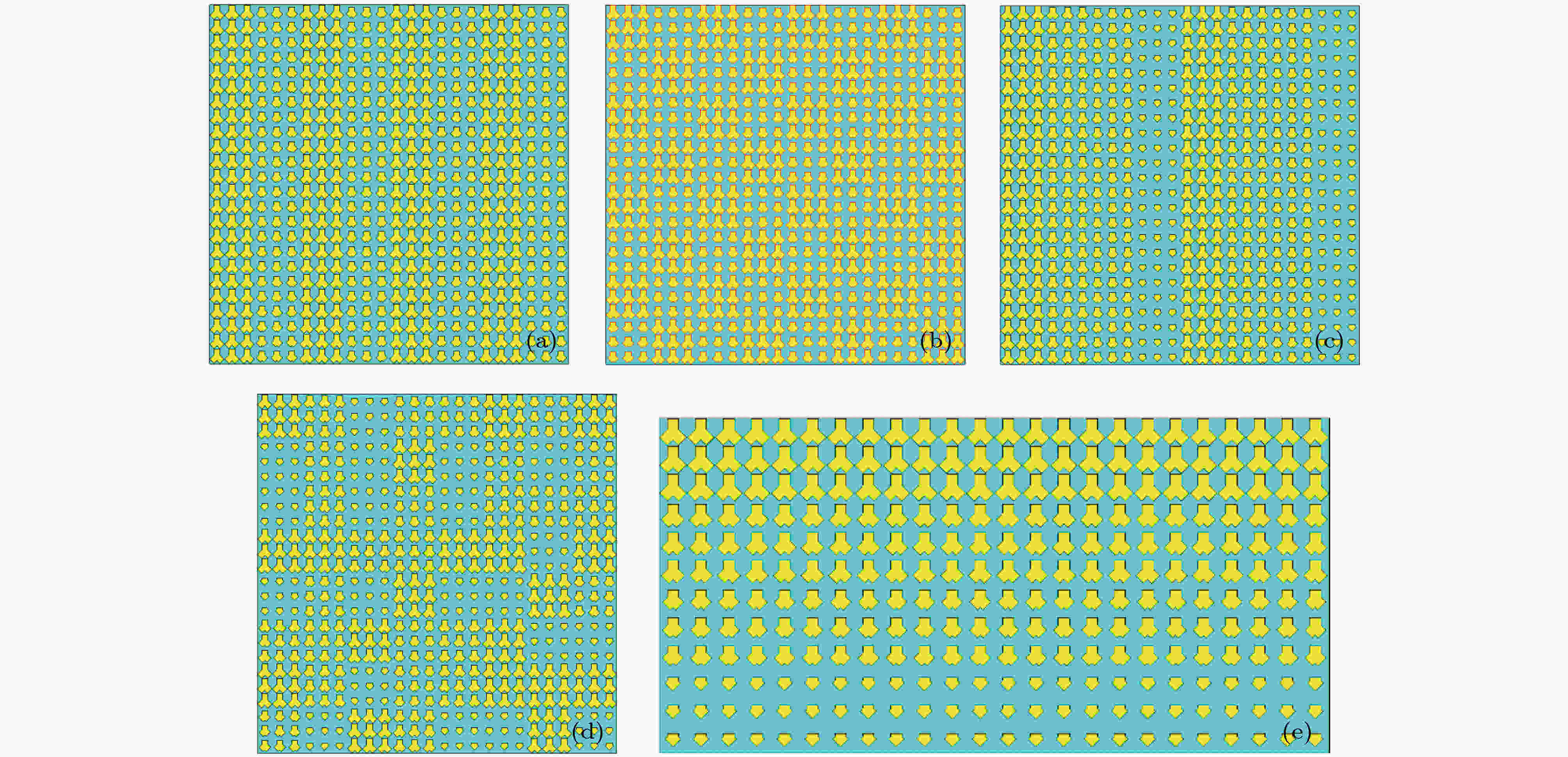 图 3 太赫兹频率编码器 (a)以“0-0, 0-1, 0-0, 0-1”序列沿x方向排列1-bit周期太赫兹频率编码器; (b)棋盘式1-bit周期太赫兹频率编码器; (c)以“00-00, 00-01, 00-10, 00-11”序列沿x方向排列2-bit周期太赫兹频率编码器; (d) 2-bit随机太赫兹频率编码器; (e) 2-bit非周期太赫兹频率编码器
图 3 太赫兹频率编码器 (a)以“0-0, 0-1, 0-0, 0-1”序列沿x方向排列1-bit周期太赫兹频率编码器; (b)棋盘式1-bit周期太赫兹频率编码器; (c)以“00-00, 00-01, 00-10, 00-11”序列沿x方向排列2-bit周期太赫兹频率编码器; (d) 2-bit随机太赫兹频率编码器; (e) 2-bit非周期太赫兹频率编码器Figure3. The terahertz frequency coding metasurface: (a) 1-bit periodic terahertz frequency coding metasurface arranged along x direction with “0-0, 0-1, 0-0, 0-1” sequence; (b) chessboard 1-bit periodic terahertz frequency coding metasurface; (c) 2-bit periodic terahertz frequency coding metasurface arranged along x direction with “00-00, 00-01, 00-10, 00-11” sequence; (d) 2-bit random terahertz frequency coding metasurface; (e) 2-bit non-periodic terahertz frequency coding metasurface.


| 单元结构 | α0/(°) | 1-bit相位响应 | |||||
| 近似α0/(°) | 空域码 | α1/(°)·THz–1 | 近似α1/(°)·THz–1 | 频域码 | 编码状态 | ||
| 154 | 160 | “0” | –312/0.6 | 0/0.6 | “0” | “0–0” | |
| 158 | 160 | “0” | –138/0.6 | 180/0.6 | “1” | “0–1” | |
表11-bit频率编码器单元
Table1.1-bit frequency terahertz coding metasurface unit.
由 (3) 式可得两个单元相位灵敏度分别为
因此, 将


利用CST软件对两种1-bit太赫兹频率编码器进行建模计算, 结果如图4—图7所示. 图4和图6为1-bit太赫兹频率编码器三维远场散射图, 图5和图7为1-bit太赫兹频率编码器二维电场图. 由图4(a)可以看出, 在用数字序列“0-0, 0-1, 0-0, 0-1”沿x方向进行编码的1-bit太赫兹频率编码器, 当初始频率f0 = 0.4 THz, 垂直入射的太赫兹波被垂直反射. 产生这种现象是由于A和C两个单元在初始频率f0 = 0.4 THz处具有一样的相位响应, 相邻单元相位差为0°, 等同于一块完美导体, 所以垂直入射的太赫兹波被原路垂直反射回去. 随着工作频率逐渐增加, 反射波束由原来一束指向z轴的主能量转换为两束对称光束(见图4(b)和图4(c)). 当频率增加到f1 = 1.0 THz时, 因A和C两个单元之间相位差变为180°, 原主瓣几乎消失, 在θ1 = 30°处产生两束z轴对称的光束, 如图4(d)所示. 此时, 俯仰角为θ1 = sin–1(λ/Γ1)=30°, 其中Γ1 = 2×3×100 μm = 600 μm为编码序列一个周期的物理长度, λ为自由空间波长. 图5(a)—(d)分别为对应图4(a)—(d)的二维电场图, 从图5中的光斑点位置也很好地验证了计算结果.
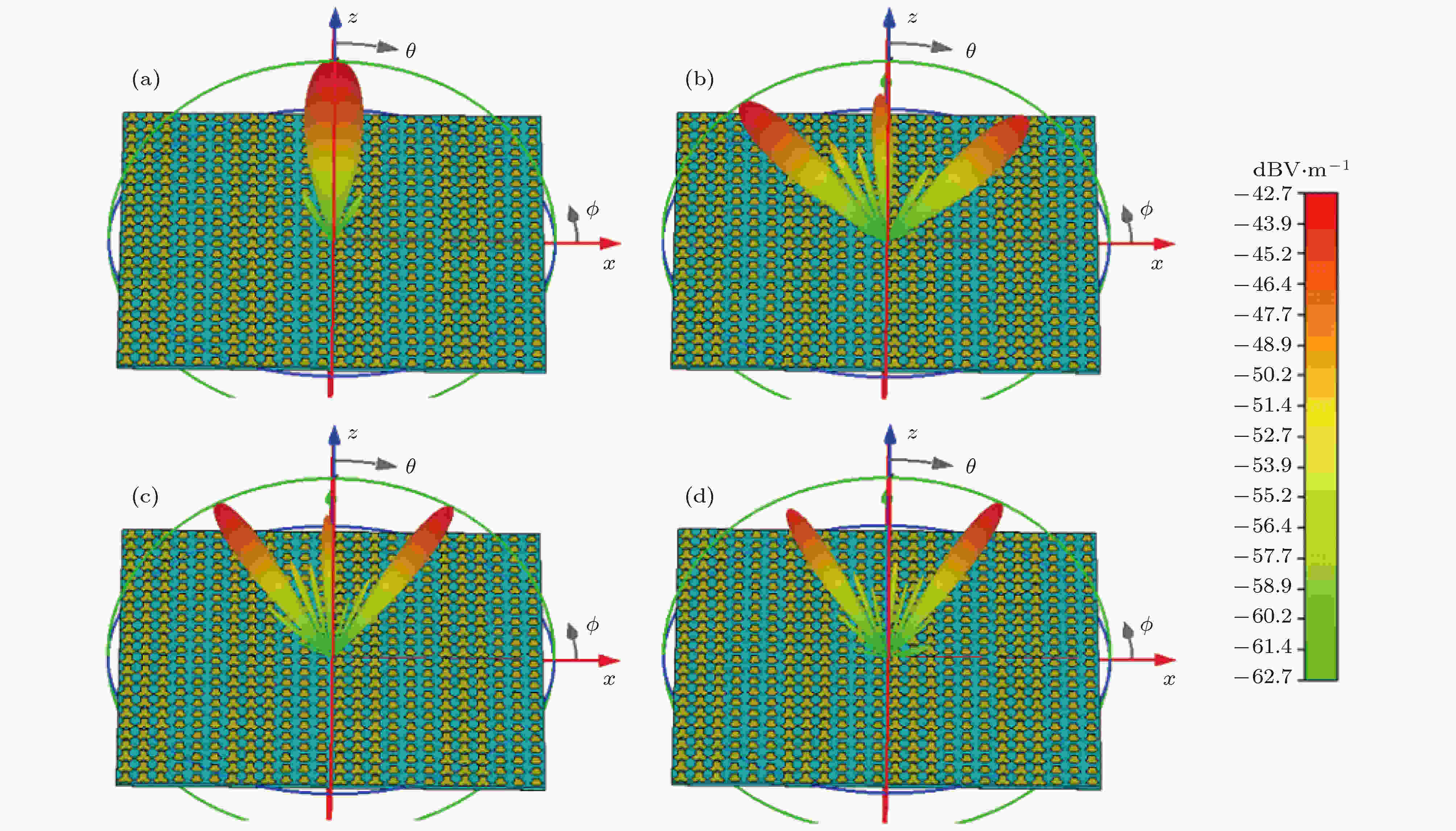 图 4 序列“0-0, 0-1, 0-0, 0-1”沿x方向上周期排布的1-bit太赫兹频率编码器 (a) f = 0.4 THz, (b) f = 0.75 THz, (c) f = 0.95 THz, (d) f = 1.0 THz时的三维远场图
图 4 序列“0-0, 0-1, 0-0, 0-1”沿x方向上周期排布的1-bit太赫兹频率编码器 (a) f = 0.4 THz, (b) f = 0.75 THz, (c) f = 0.95 THz, (d) f = 1.0 THz时的三维远场图Figure4. 1-bit terahertz frequency coding metasurface arranged periodically along x direction with sequence “0-0,0-1, 0-0, 0-1”: Three-dimensional far-field pattern of (a) f = 0.4 THz, (b) f = 0.75 THz, (c) f = 0.95 THz, (d) f = 1.0 THz.
 图 5 序列“0-0, 0-1, 0-0, 0-1”沿x方向上周期排布的1-bit太赫兹频率编码器 (a) f = 0.4 THz, (b) f = 0.75 THz, (c) f = 0.95 THz, (d) f = 1.0 THz时的二维电场图
图 5 序列“0-0, 0-1, 0-0, 0-1”沿x方向上周期排布的1-bit太赫兹频率编码器 (a) f = 0.4 THz, (b) f = 0.75 THz, (c) f = 0.95 THz, (d) f = 1.0 THz时的二维电场图Figure5. 1-bit terahertz frequency coding metasurface arranged periodically along x direction with sequence“0-0, 0-1, 0-0, 0-1”: Two-dimensional electric field pattern of (a) f = 0.4 THz, (b) f = 0.75 THz, (c) f = 0.95 THz, (d) f = 1.0 THz.
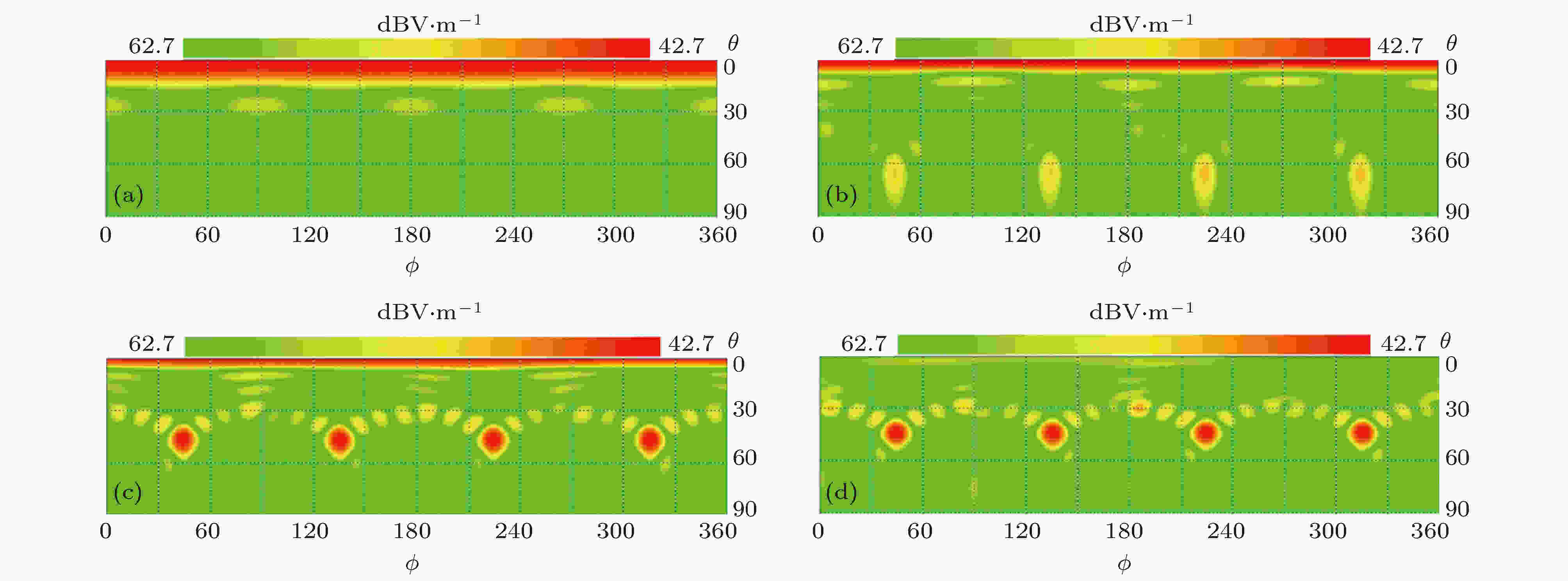 图 7 棋盘式1-bit太赫兹频率编码器 (a) f = 0.4 THz, (b) f = 0.75 THz, (c) f = 0.95 THz, (d) f = 1.0 THz时的二维电场图
图 7 棋盘式1-bit太赫兹频率编码器 (a) f = 0.4 THz, (b) f = 0.75 THz, (c) f = 0.95 THz, (d) f = 1.0 THz时的二维电场图Figure7. Chessboard 1-bit terahertz frequency coding metasurface: Two-dimensional electric field pattern of (a) f = 0.4 THz, (b) f = 0.75 THz, (c) f = 0.95 THz, (d) f = 1.0 THz.
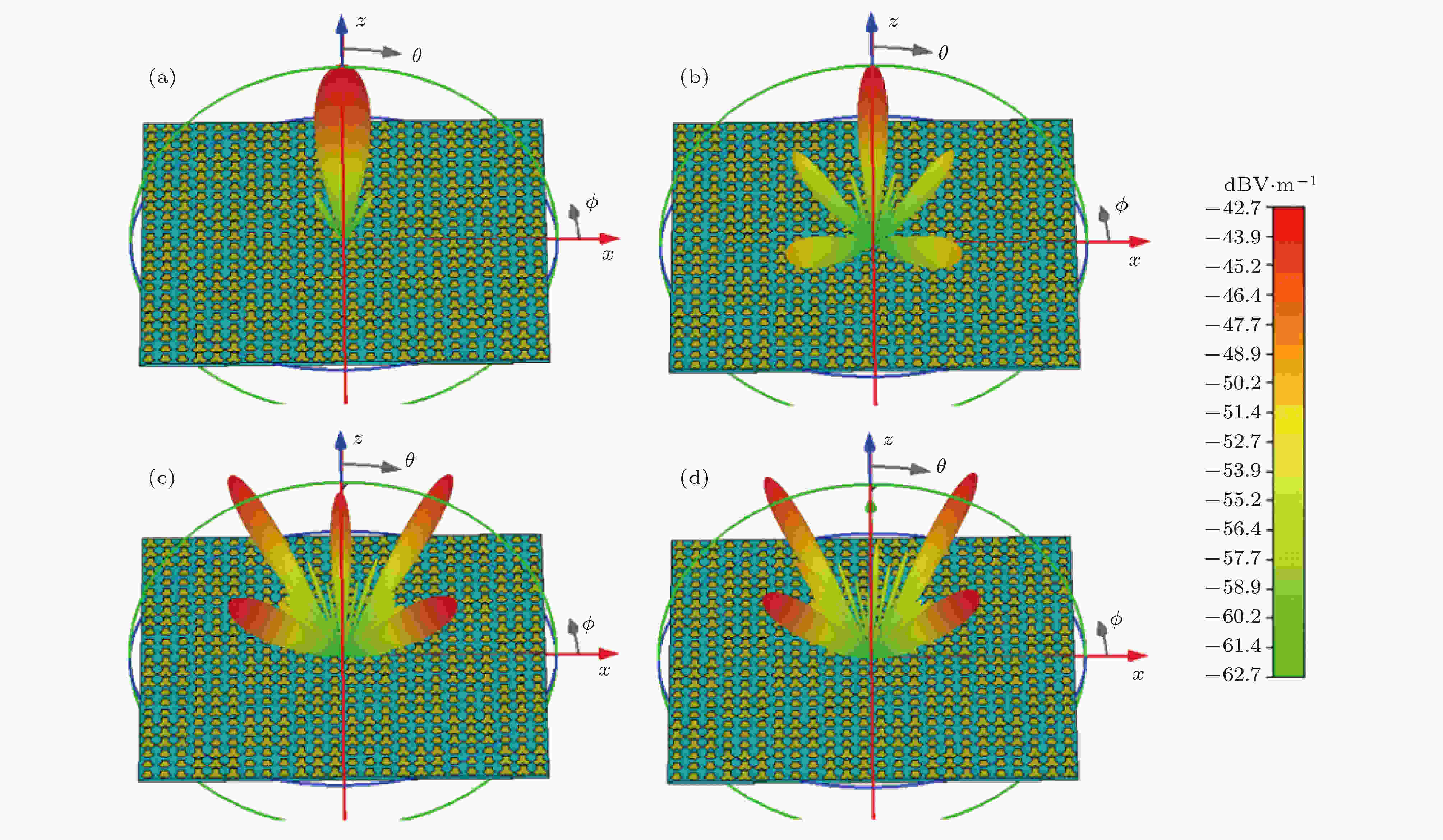 图 6 棋盘式1-bit太赫兹频率编码器 (a) f = 0.4 THz, (b) f = 0.75 THz, (c) f = 0.95 THz, (d) f = 1.0 THz时的三维远场图
图 6 棋盘式1-bit太赫兹频率编码器 (a) f = 0.4 THz, (b) f = 0.75 THz, (c) f = 0.95 THz, (d) f = 1.0 THz时的三维远场图Figure6. Chessboard 1-bit terahertz frequency coding metasurface: Three-dimensional far-field pattern of (a) f = 0.4 THz, (b) f = 0.75 THz, (c) f = 0.95 THz, (d) f = 1.0 THz.
图6(a)—(d)给出了棋盘式分布的1-bit太赫兹频率编码器远场散射能量随频率变化而变化的过程.随着频率的增加, 在初始频率f0 = 0.4 THz处产生的反射太赫兹波光束沿着z轴主瓣逐渐变化为四束对称光束, 主瓣能量变得越来越弱, 四束对称光束能量越来越强. 当频率f1 = 1.0 THz时, 在俯仰角θ2 = 45°处产生四束对称光束, 此时θ2 = sin–1(λ/Γ2) = 45°(Γ2 =


上述计算可得到A, B, C和D四个单元在初始频率处具有相同的相位响应, 但在频率范围内相位灵敏度却不一样. 当太赫兹波垂直入射到太赫兹频率编码器时, 由太赫兹编码器产生的远场能量与

为了观察其产生的现象, 利用CST对图3(c)和图3(d)两种设计方案进行了仿真, 结果如图8—图11所示. 图8和图10分别是以序列“00-00, 00-01, 00-10, 00-11”沿x方向排列的2-bit周期太赫兹频率编码器的三维远场散射以及二维电场图. 图9和图11分别是2-bit随机太赫兹频率编码器的三维远场散射以及二维电场图. 图8(a)和图9(a)是在初始频率f0 = 0.4 THz时, 太赫兹波垂直照射到2-bit周期太赫兹频率编码器所产生的结果. 由于四个基本单元在f0 = 0.4 THz处相位差为
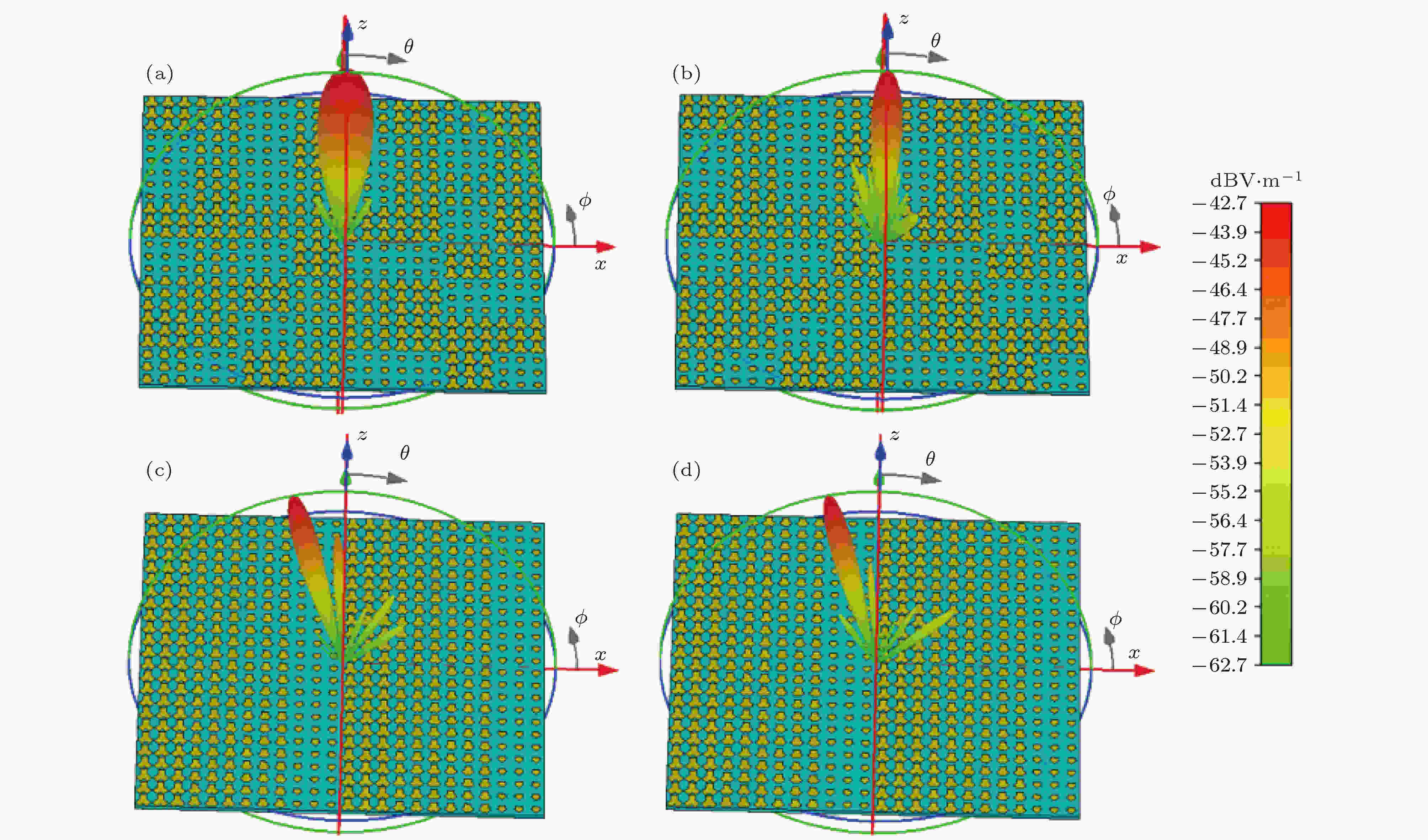 图 8 “00-00, 00-01, 00-10, 00-11”周期排布的2-bit太赫兹频率编码器 (a) f = 0.4 THz, (b) f = 0.75 THz, (c) f = 0.95 THz, (d) f = 1.0 THz时的三维远场图
图 8 “00-00, 00-01, 00-10, 00-11”周期排布的2-bit太赫兹频率编码器 (a) f = 0.4 THz, (b) f = 0.75 THz, (c) f = 0.95 THz, (d) f = 1.0 THz时的三维远场图Figure8. 2-bit periodic terahertz frequency coding metasurfacearranged along x direction with “00-00, 00-01, 00-10, 00-11” sequence: Three-dimensionalfar-field pattern of (a) f = 0.4 THz, (b) f = 0.75 THz, (c) f = 0.95 THz, (d) f = 1.0 THz.
 图 11 2-bit太赫兹随机频率编码器 (a) f = 0.4 THz, (b) f = 0.75 THz, (c) f = 0.95 THz, (d) f = 1.0 THz时二维电场图
图 11 2-bit太赫兹随机频率编码器 (a) f = 0.4 THz, (b) f = 0.75 THz, (c) f = 0.95 THz, (d) f = 1.0 THz时二维电场图Figure11. 2-bit random terahertz frequency coding metasurface:two-dimensional electric field pattern of (a) f = 0.4 THz, (b) f = 0.75 THz, (c) f = 0.95 THz, (d) f = 1.0 THz.
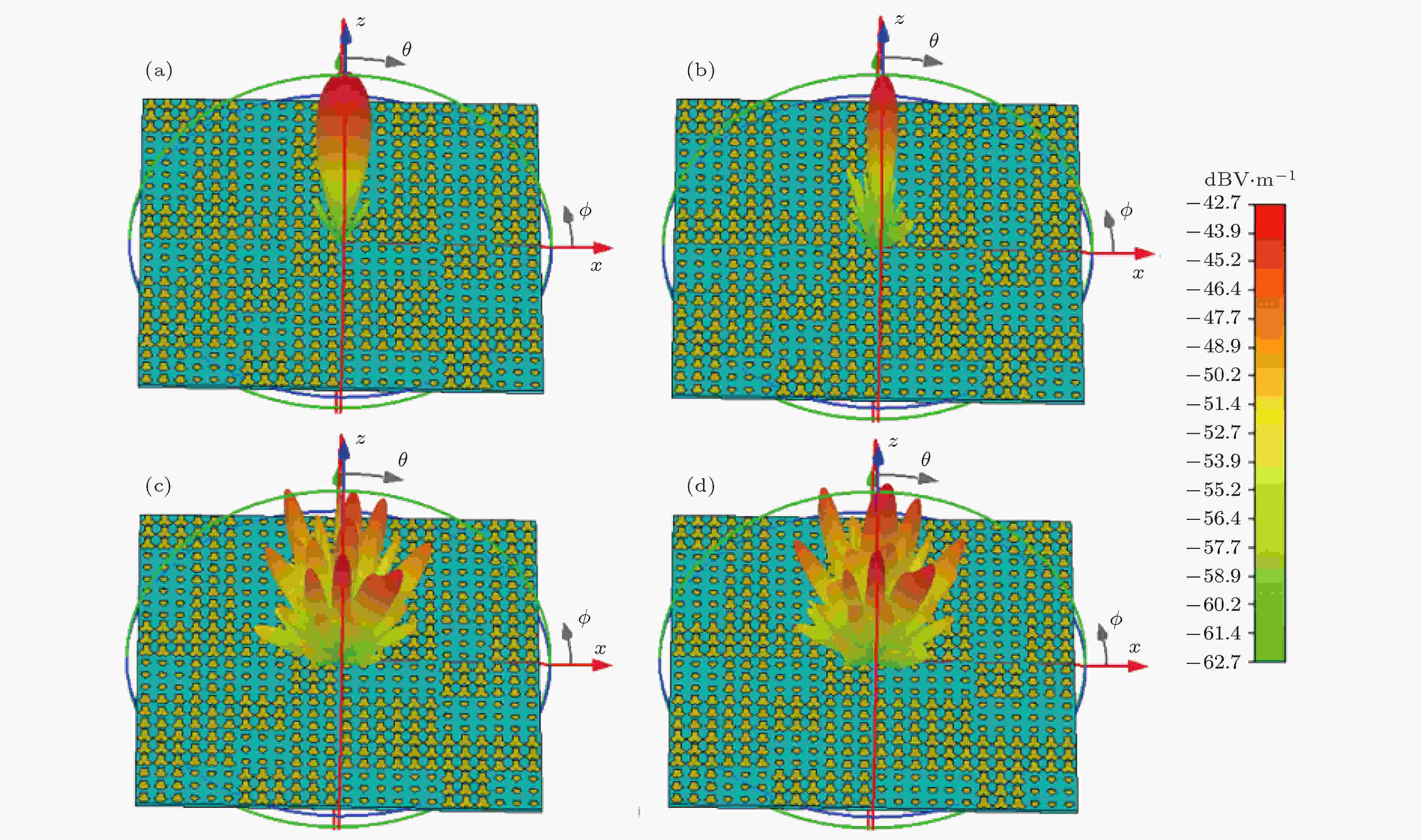 图 10 2-bit太赫兹随机频率编码器 (a) f = 0.4 THz, (b) f = 0.75 THz, (c) f = 0.95 THz, (d) f = 1.0 THz时的三维远场图
图 10 2-bit太赫兹随机频率编码器 (a) f = 0.4 THz, (b) f = 0.75 THz, (c) f = 0.95 THz, (d) f = 1.0 THz时的三维远场图Figure10. 2-bit random terahertz frequency coding metasurface: Three-dimensional far-field pattern of (a) f = 0.4 THz, (b) f = 0.75 THz, (c) f = 0.95 THz, (d) f = 1.0 THz.
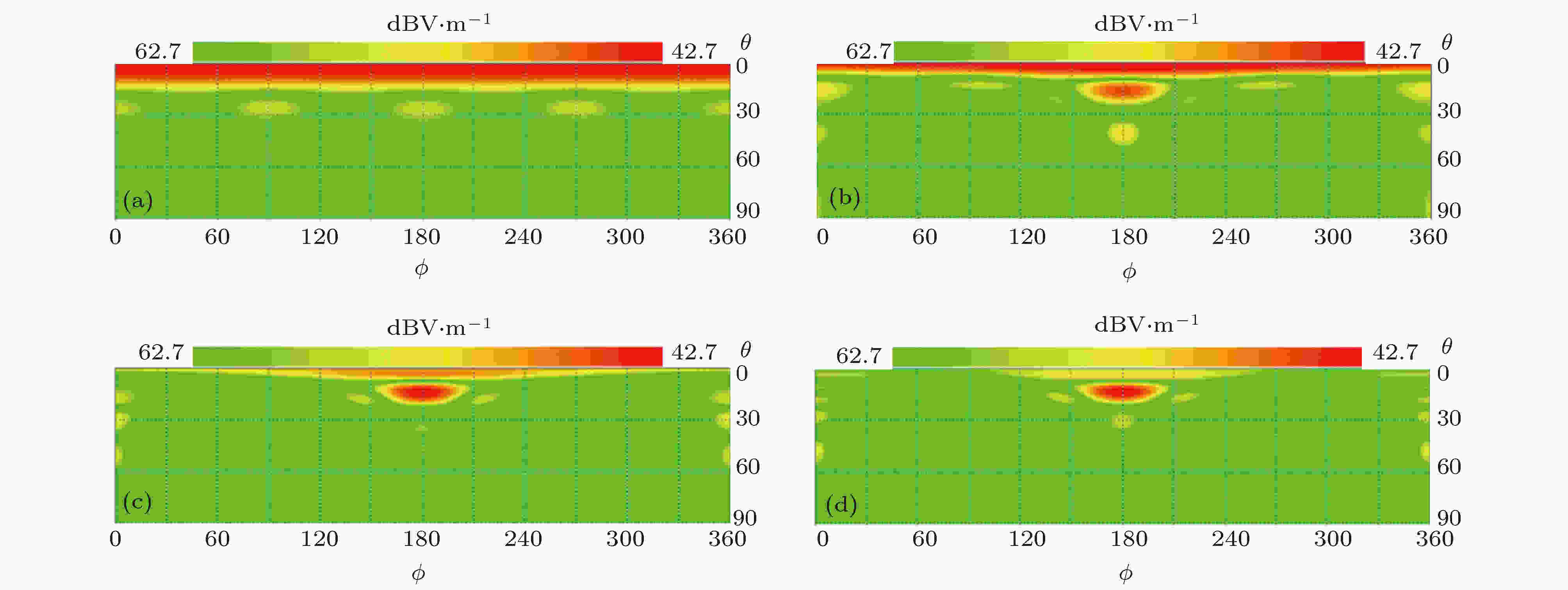 图 9 “00-00, 00-01, 00-10, 00-11”周期排布的2-bit太赫兹频率编码器 (a) f = 0.4 THz, (b) f = 0.75 THz, (c) f = 0.95 THz, (d) f = 1.0 THz时的二维电场图
图 9 “00-00, 00-01, 00-10, 00-11”周期排布的2-bit太赫兹频率编码器 (a) f = 0.4 THz, (b) f = 0.75 THz, (c) f = 0.95 THz, (d) f = 1.0 THz时的二维电场图Figure9. 2-bit periodic terahertz frequency coding metasurface arranged along x direction with “00-00, 00-01, 00-10, 00-11” sequence: Two-dimensionalelectric field pattern of (a) f = 0.4 THz, (b) f = 0.75 THz, (c) f = 0.95 THz, (d) f = 1.0 THz.
对于2-bit随机太赫兹频率编码器所得到的结果如图10(d)所示. 太赫兹波垂直入射后, 由原始一束主瓣变为逐渐被散射到多个方向, 形成了无数的太赫兹波光束, 其对应的二维电场如图11(d)所示. 根据能量守恒定律, 将极大地缩减每个光束的能量, 可以很好地缩减雷达散射截面. 在频率为1.0 THz下雷达散射截面缩减在θ = 0, φ = 0方向上最大可达29 dB, 如图12所示. 当垂直入射的太赫兹波频率介于f0与f1(从0.4 THz到1.0 THz)之间时, 2-bit随机太赫兹频率编码器将发生轻度漫反射现象, 形成越来越多的散射波, 使原本集中的太赫兹波能量分散到多个方向, 结果如图10(b)和图10(c)所示, 对应的二维电场如图11(b)和图11(c)所示.
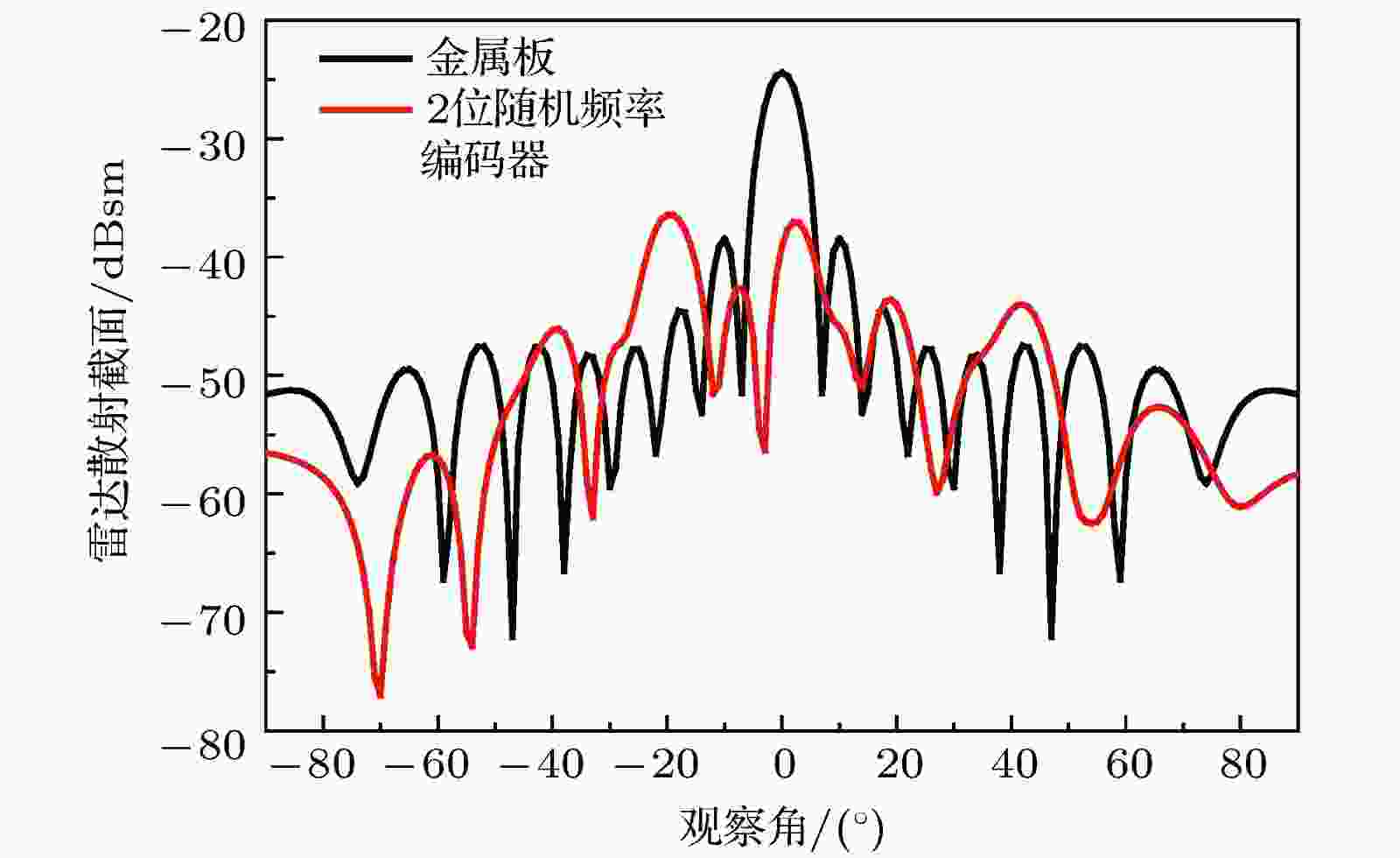 图 12 2-bit太赫兹随机频率编码器和金属板在1.0 THz处的雷达散射截面分布
图 12 2-bit太赫兹随机频率编码器和金属板在1.0 THz处的雷达散射截面分布Figure12. Radar cross section distribution of 2-bit terahertz random frequency coding metasurface and metal plate at 1.0 THz.

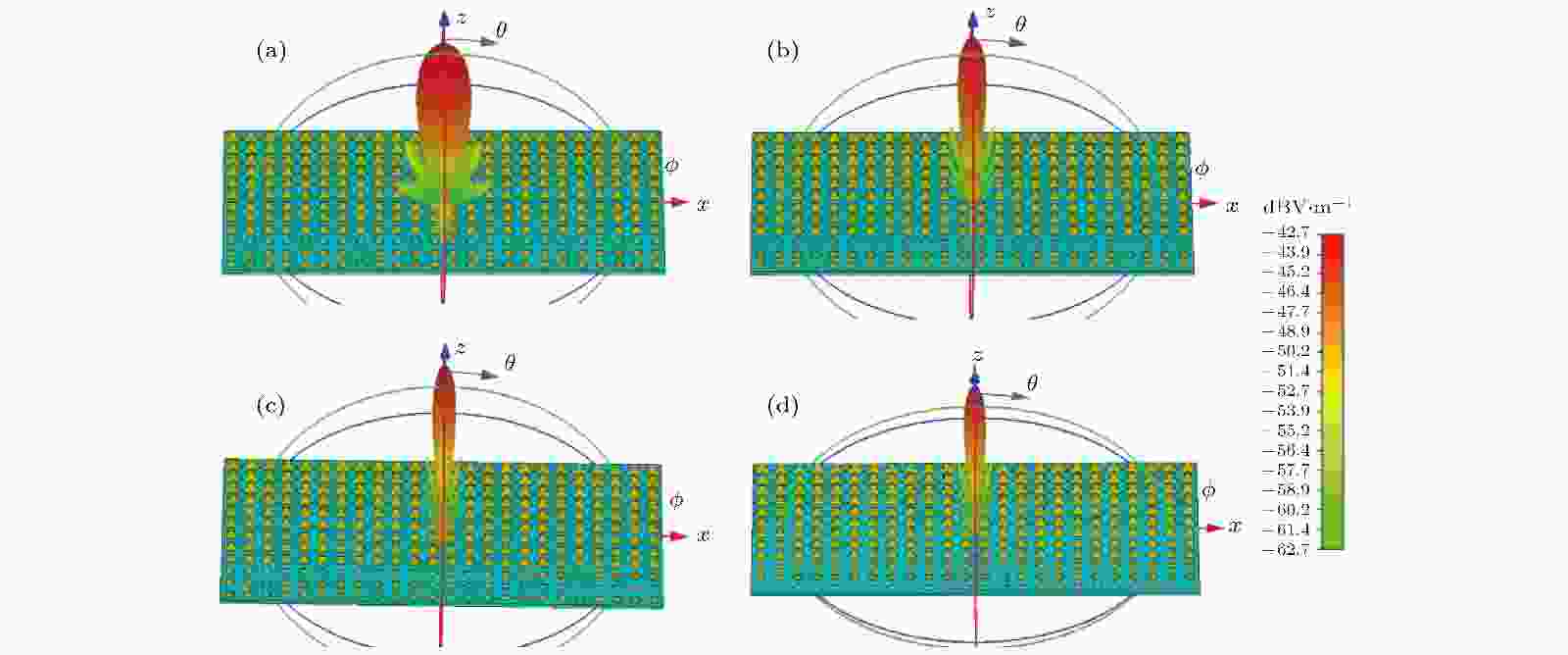 图 13 2-bit非周期排布太赫兹频率编码器 (a) f = 0.4 THz, (b) f = 0.75 THz, (c) f = 0.95 THz, (d) f = 1.0 THz时的三维远场图
图 13 2-bit非周期排布太赫兹频率编码器 (a) f = 0.4 THz, (b) f = 0.75 THz, (c) f = 0.95 THz, (d) f = 1.0 THz时的三维远场图Figure13. Fig. 10. 2-bit non-periodic terahertz frequency coding metasurface: Three-dimensional far-field pattern of (a) f = 0.4 THz, (b) f = 0.75 THz, (c) f = 0.95 THz, (d) f = 1.0 THz.
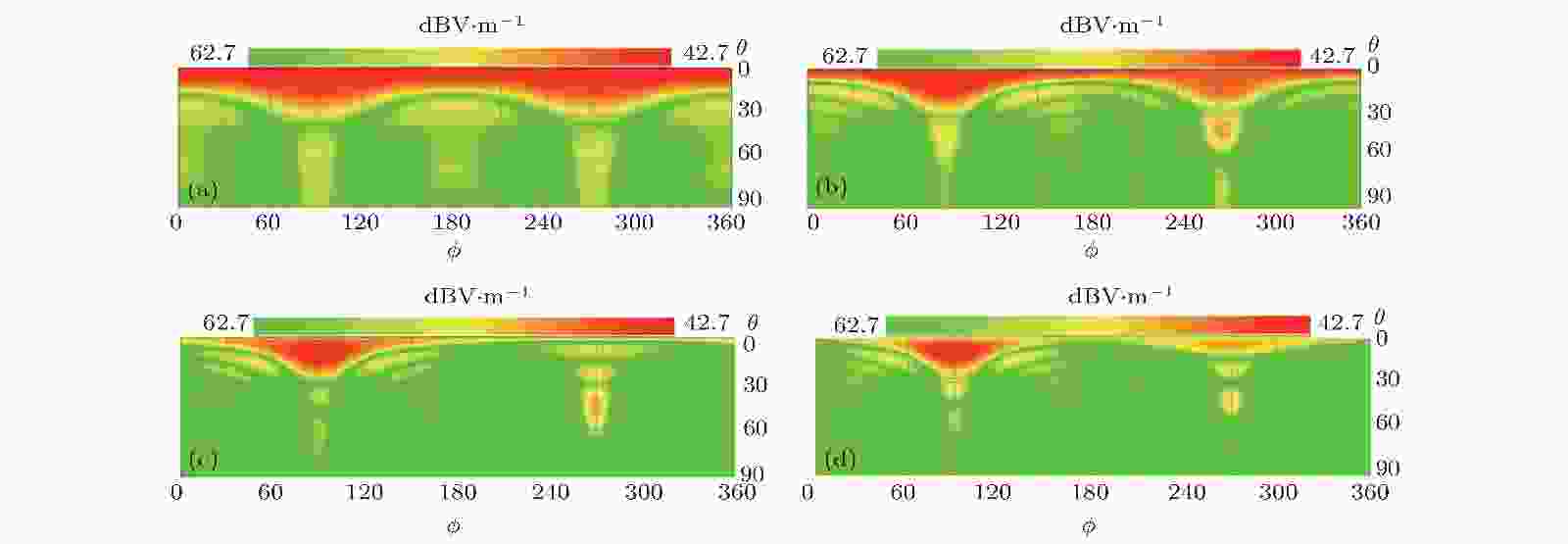 图 14 2-bit非周期排布太赫兹频率编码器 (a) f = 0.4 THz, (b) f = 0.75 THz, (c) f = 0.95 THz, (d) f = 1.0 THz时的二维电场图
图 14 2-bit非周期排布太赫兹频率编码器 (a) f = 0.4 THz, (b) f = 0.75 THz, (c) f = 0.95 THz, (d) f = 1.0 THz时的二维电场图Figure14. Fig. 10. 2-bit non-periodic terahertz frequency coding metasurface: Two-dimensional electric field pattern of (a) f = 0.4 THz, (b) f = 0.75 THz, (c) f = 0.95 THz, (d) f = 1.0 THz.
